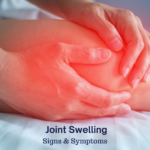Understanding Joint Pain: Causes, Treatment, and Prevention
Joint pain is a common ailment that affects millions of people worldwide. It can range from mild discomfort to severe pain, impacting daily activities and overall quality of life. Understanding the causes, treatment options, and preventive measures for joint pain is essential for managing this condition effectively.
Causes of Joint Pain
Joint pain can result from various conditions, ranging from acute injuries to chronic diseases. Here are some common causes:
- Osteoarthritis: This is the most prevalent form of arthritis, often associated with aging. It occurs when the cartilage that cushions the ends of the bones wears down over time, leading to pain, stiffness, and swelling.
- Rheumatoid Arthritis: An autoimmune disorder where the immune system attacks the lining of the joints, causing inflammation, pain, and eventually joint damage.
- Injuries: Sprains, strains, and fractures can cause acute joint pain. Sports injuries or accidents often lead to temporary joint pain that can become chronic if not treated properly.
- Gout: A type of arthritis caused by the buildup of uric acid crystals in the joints, leading to sudden and severe pain, usually in the big toe.
- Bursitis: Inflammation of the bursae, the small sacs of fluid that cushion the joints, can cause pain, particularly in the shoulder, elbow, or hip.
- Tendinitis: Inflammation of the tendons, often due to overuse or repetitive motions, can result in joint pain, particularly in the elbows, shoulders, and knees.
- Infections: Certain infections, such as septic arthritis, can cause joint pain by invading the joint space.
- Other Conditions: Conditions like lupus, Lyme disease, and fibromyalgia can also contribute to joint pain.
Symptoms of Joint Pain
The symptoms of joint pain can vary depending on the underlying cause but generally include:
- Pain: This can be a constant ache or intermittent sharp pain.
- Swelling: Inflammation around the joint.
- Stiffness: Reduced range of motion, especially after periods of inactivity.
- Redness and Warmth: Indicating inflammation or infection.
- Weakness: Difficulty in using the joint effectively.
Diagnosing Joint Pain
To diagnose the cause of joint pain, healthcare providers may perform a variety of tests, including:
- Physical Examination: Assessing the range of motion, swelling, and tenderness.
- Imaging Tests: X-rays, MRIs, and CT scans to visualize joint damage or inflammation.
- Blood Tests: Identifying markers of inflammation, infection, or autoimmune disorders.
- Joint Fluid Analysis: Analyzing fluid from the joint to detect infections or crystals associated with gout.
Treatment Options
Treatment for joint pain depends on the underlying cause and the severity of the symptoms. Here are some common treatment approaches:
- Medications:
- Pain Relievers: Over-the-counter options like acetaminophen or ibuprofen.
- Anti-inflammatory Drugs: Nonsteroidal anti-inflammatory drugs (NSAIDs) to reduce inflammation and pain.
- Disease-Modifying Antirheumatic Drugs (DMARDs): Used for rheumatoid arthritis to slow disease progression.
- Corticosteroids: Powerful anti-inflammatory drugs that can be taken orally or injected directly into the joint.
- Physical Therapy: Exercises to strengthen the muscles around the joint, improve range of motion, and reduce pain.
- Lifestyle Changes:
- Weight Management: Reducing weight to lessen the strain on joints, particularly the knees and hips.
- Diet: Eating a balanced diet rich in anti-inflammatory foods like fruits, vegetables, and omega-3 fatty acids.
- Assistive Devices: Using braces, canes, or shoe inserts to support the joint and reduce pain during activities.
- Alternative Therapies:
- Acupuncture: Some find relief from joint pain through acupuncture.
- Massage Therapy: Can help alleviate pain and improve joint function.
- Surgical Options: In severe cases where other treatments have failed, surgery may be necessary:
- Arthroscopy: A minimally invasive procedure to repair joint damage.
- Joint Replacement: Replacing the damaged joint with an artificial one, commonly done for hips and knees.
Preventing Joint Pain
While some causes of joint pain cannot be prevented, certain measures can help reduce the risk:
- Maintain a Healthy Weight: Excess weight puts additional stress on weight-bearing joints.
- Stay Active: Regular exercise strengthens the muscles around the joints, improving support and reducing pain.
- Protect Your Joints: Avoid repetitive motions and high-impact activities that can strain the joints. Use proper techniques and equipment when exercising or lifting.
- Healthy Diet: A balanced diet with sufficient vitamins and minerals supports joint health. Omega-3 fatty acids found in fish can help reduce inflammation.
- Avoid Smoking and Excessive Alcohol: These can contribute to joint problems and overall poor health.
Living with Joint Pain
Managing chronic joint pain involves a combination of treatments and lifestyle adjustments. Here are some tips for living with joint pain:
- Educate Yourself: Understanding your condition helps you make informed decisions about your care.
- Stay Active: Engage in low-impact activities like swimming, cycling, or walking to keep your joints moving without excessive strain.
- Use Heat and Cold: Applying heat can relax muscles and ease stiffness, while cold packs can reduce inflammation and numb pain.
- Practice Good Posture: Proper alignment reduces unnecessary stress on your joints.
- Join a Support Group: Connecting with others who have similar experiences can provide emotional support and practical advice.
- Communicate with Your Healthcare Provider: Regular check-ups and open communication with your doctor ensure that your treatment plan remains effective.
Conclusion
Joint pain is a multifaceted condition that requires a comprehensive approach to manage effectively. By understanding the causes, exploring various treatment options, and adopting preventive measures, individuals can significantly improve their quality of life. Staying informed and proactive in managing joint health is key to living well with joint pain.





